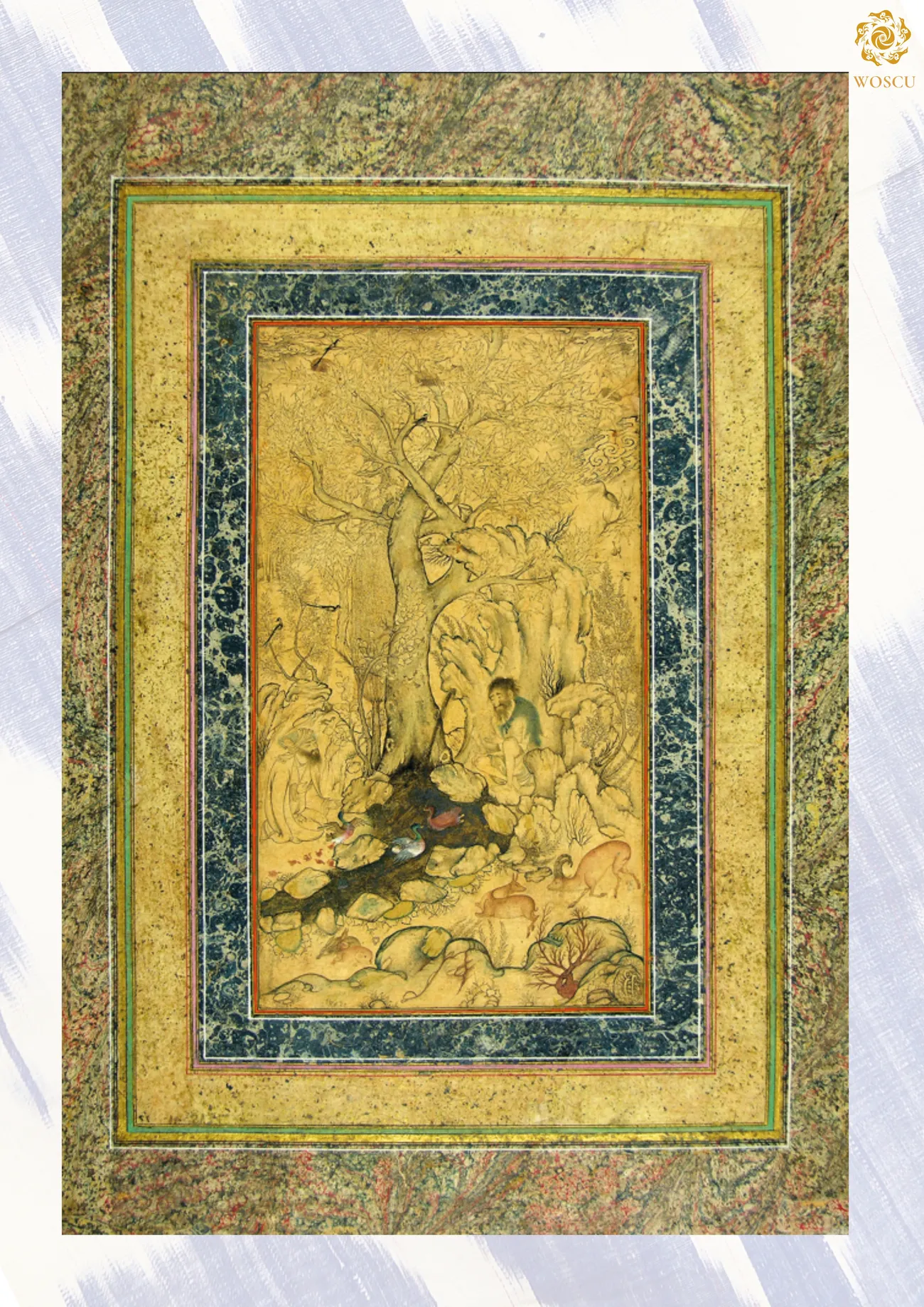In this work, Behzad seems to continue the traditions of his mentor, using the "siyah-qalam" technique - ink drawing, a clear legacy of Chinese influence on Islamic art. The miniature depicts the 10th parable of the 4th chapter of "Gulistan," which speaks of the importance of silence. It shows a poet who went to the leader of the bandits to read him a laudatory ode, but instead of receiving a reward, he was expelled from the village naked in the frost, where dogs attacked him.
Despite its incompleteness, this work already demonstrates the characteristic features of Behzad's future style. He chooses a socially significant plot, skillfully composing the scene, placing the main character at the center of the composition. The trees framing his figure create a sense of isolation, emphasizing his vulnerability to the dogs.
Behzad subtly conveys the depth of space and detail, demonstrating his attentiveness. The Sufi cloak - taylasan, thrown over the poet's naked body, hints at the hidden meaning of the plot, emphasizing its spiritual dimension.
This early work by Behzad is not just an illustration, but a captivating testament to his talent, inspiration, and mastery of his apprenticeship lessons, which laid the foundation for his great work.
You can learn more about the topic in the book-album "The legacy of Kamal ud-din Behzad in the World Collections" (L volume) in the series "The Cultural Legacy of Uzbekistan".
The main sponsor of the project is the oilfield services company Eriell-Group.

